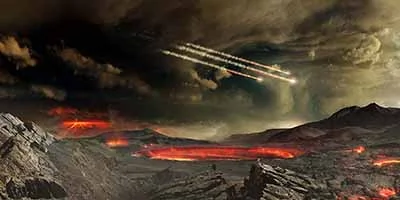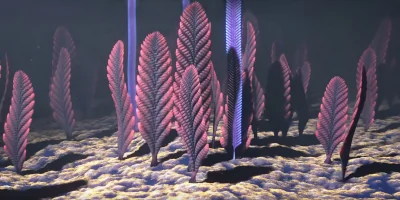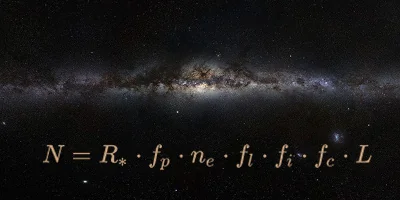The Beginnings of Life
About the origin of life on earth
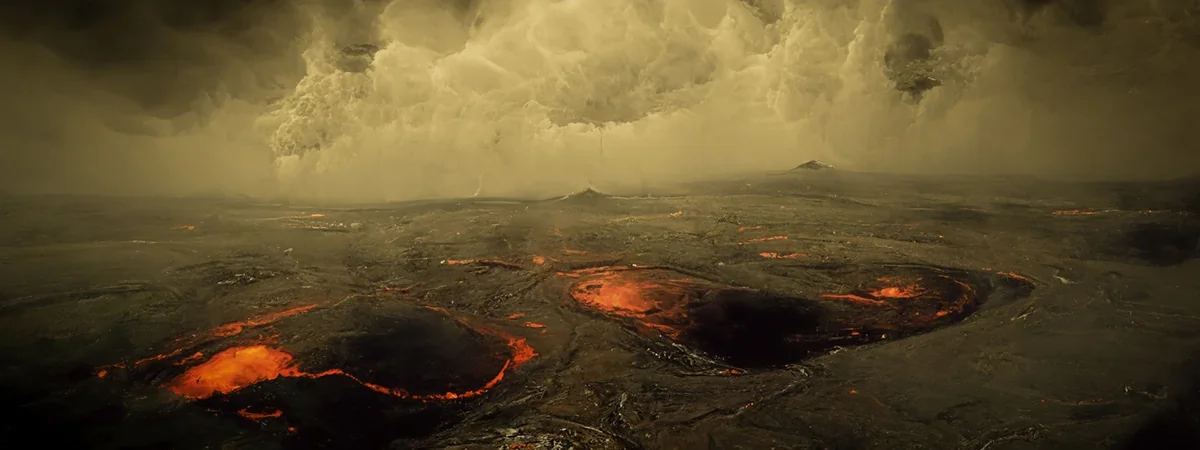 Artist's impression of the Earth in the early Hadean. (Image: Own work; AI generated)
Artist's impression of the Earth in the early Hadean. (Image: Own work; AI generated)
A world dominated by water
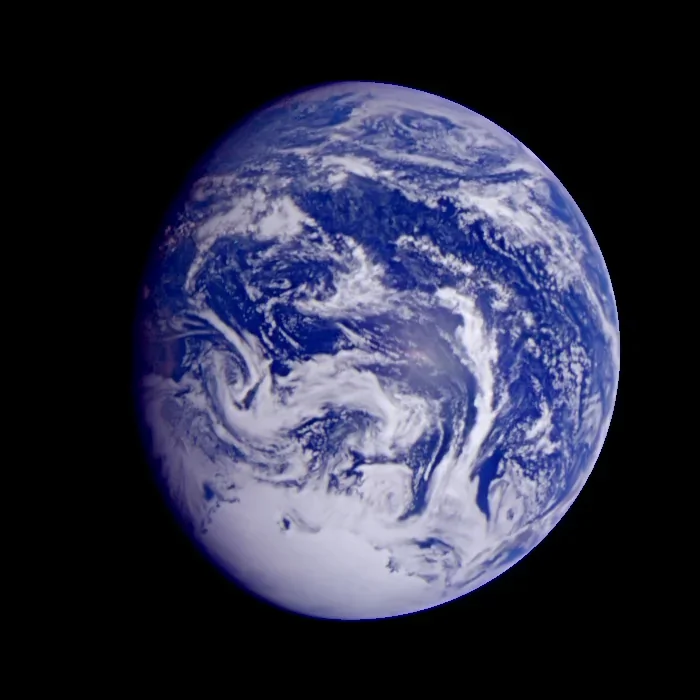 A space probe passing by Earth at the right time and place could
see a water world with not much hint of continental crust at all. The foto shows the
Pacific Ocean. The only visible land mass is a small part of Australia and the ice covered continent of
Antarctica. Almost everything visible is water.
A space probe passing by Earth at the right time and place could
see a water world with not much hint of continental crust at all. The foto shows the
Pacific Ocean. The only visible land mass is a small part of Australia and the ice covered continent of
Antarctica. Almost everything visible is water.
Throughout time, Earth has shown many faces. It has been a volcanic planet, an ice planet, a tropical world, and in the distant future it will become a desert planet - devoid of life. In fact, it should be called a "water world". It is often overlooked that only 29 % of the Earth's surface is continental crust with land or islands. The remaining 71% is covered by water. An alien probe passing by Earth might see only that: Water - a seemingly endless ocean covering a blue planet. So it's no surprise that life itself began in the ocean.
Today, humans dominate the land and the seas. Biologically, humans are an intelligent subspecies of primates, higher mammals. We are so closely related to chimpanzees and bonobos that 99 % of our DNA matches theirs. That's close enough that many virus-borne diseases can easily jump from one species to the other. But what does that mean when we also share 60 % of our genes with bananas? [4]
What makes us better, or at least more successful, than other species? Intelligence? One might think that the development of intelligence would be the logical consequence of 4.5 billion years of evolution, almost inevitable. A look at Earth's history casts doubt on this.
Earth will be habitable for another 500 million years or so. In the end, if you take stock of what was the most successful life form in its history, the answer could also be: Horseshoe crabs, Nautilus, or maybe even Rhynchocyon. We now call these species living fossils. They are species that are so old that we know them as fossils in museums, while at the same time they appear little changed in their natural habitats. They have found habitats in niches that hardly change. Seemingly forgotten by time and evolution. A circumstance that we seem to be "correcting", as many of the "living fossils" are currently threatened with extinction, by us.
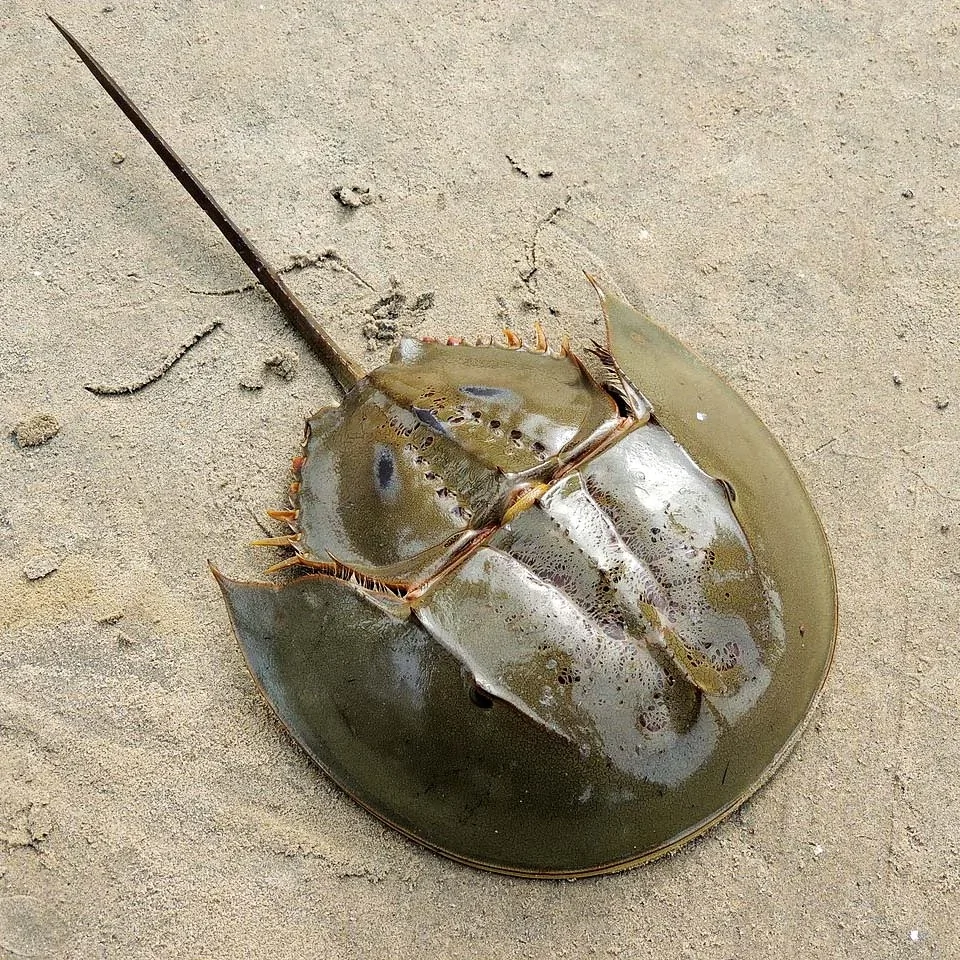 A horseshoe crab. Fossil finds of closely related species can be dated back up to 480 million years.
(Foto: Shubham Chatterjee; via Wikimedia Commons; CC BY-SA 3.0)
A horseshoe crab. Fossil finds of closely related species can be dated back up to 480 million years.
(Foto: Shubham Chatterjee; via Wikimedia Commons; CC BY-SA 3.0)
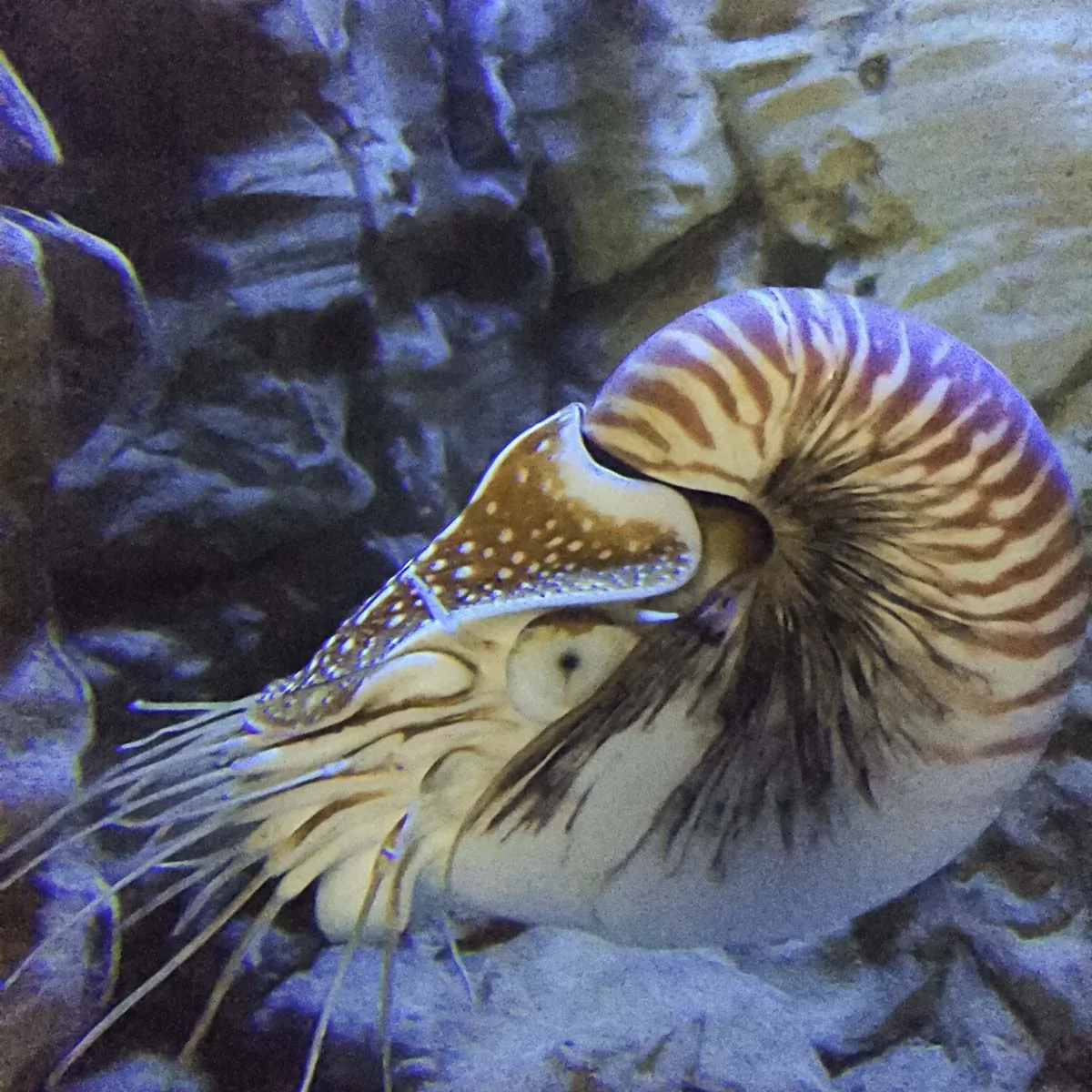 Nautilus is very closely related to a species that existed 38 million years ago in the Eocene.
(Foto: Flickr User herr.g; Original; CC BY-SA 2.0)
Nautilus is very closely related to a species that existed 38 million years ago in the Eocene.
(Foto: Flickr User herr.g; Original; CC BY-SA 2.0)
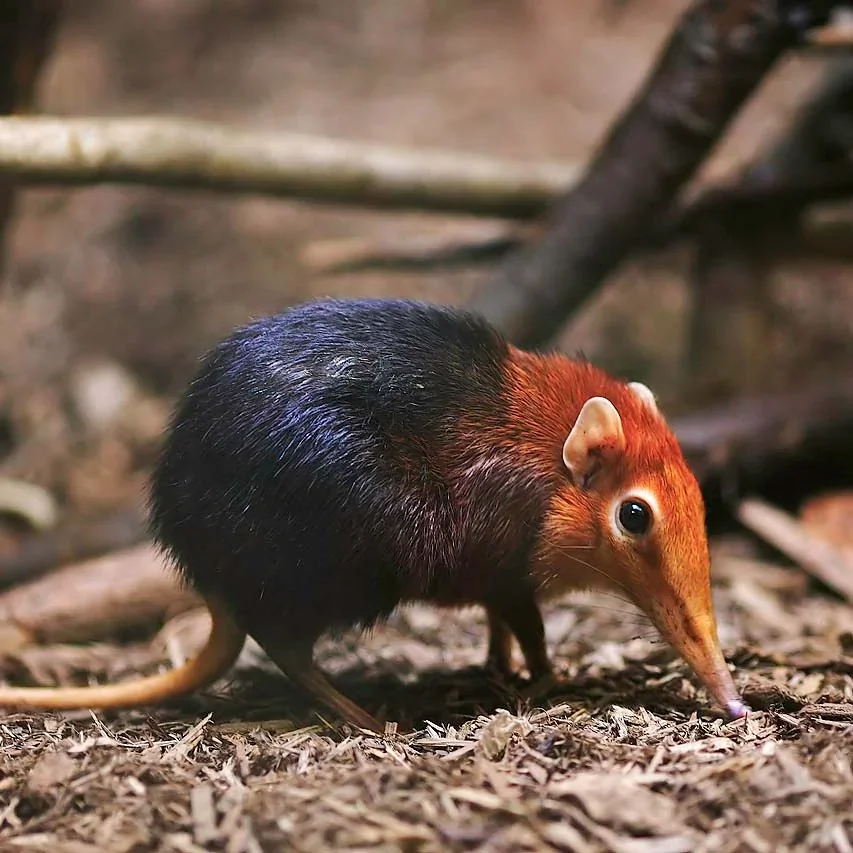 The insectivorous Rhynchocyon is a genus of elephant shrew. Closely related
species already lived in the Eocene 40 million years ago.
(Foto: Joey Makalintal; Original; CC BY 2.0)
The insectivorous Rhynchocyon is a genus of elephant shrew. Closely related
species already lived in the Eocene 40 million years ago.
(Foto: Joey Makalintal; Original; CC BY 2.0)
This series of articles tells the story of the competition for the solid earth, it is a story of winners, losers, global catastrophes and survivors. It is the story of life on Earth, and it begins in the ocean, 4300 million years ago.
 The complete timeline of the Earth's history. (Image: Ingo Berg; CC BY-SA 4.0)
The complete timeline of the Earth's history. (Image: Ingo Berg; CC BY-SA 4.0)
The Beginnings of Life
One of the oldest forms of life on earth are stromatolites. These are sedimentary rocks consisting of limestone, which are formed by formed by microorganisms. (Video: ZDF/Terra X/Viking Film/Iris Gesang/Andreas Kieling, Frank Gutsche/Christian R.Timmann/Richard Sako, Boris Bürgel, Markus Tanz, John-Christian Kultzscher; Originalquelle; CC BY 4.0)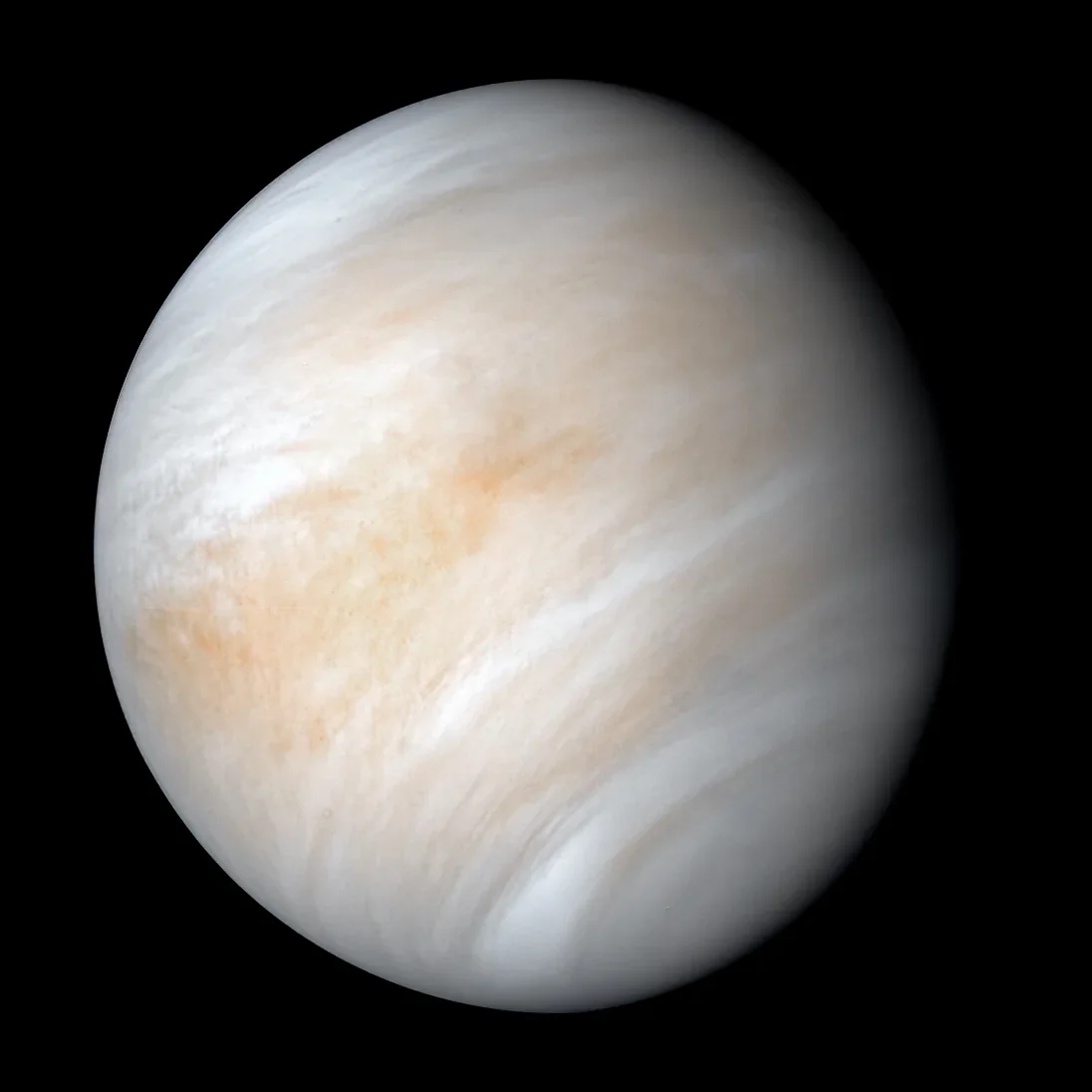 The Earth in the Hadean was very similar to Venus of today. The surface was hidden behind a
dense layer of clouds with an atmosphere of carbon dioxide and water vapor.
The Earth in the Hadean was very similar to Venus of today. The surface was hidden behind a
dense layer of clouds with an atmosphere of carbon dioxide and water vapor.
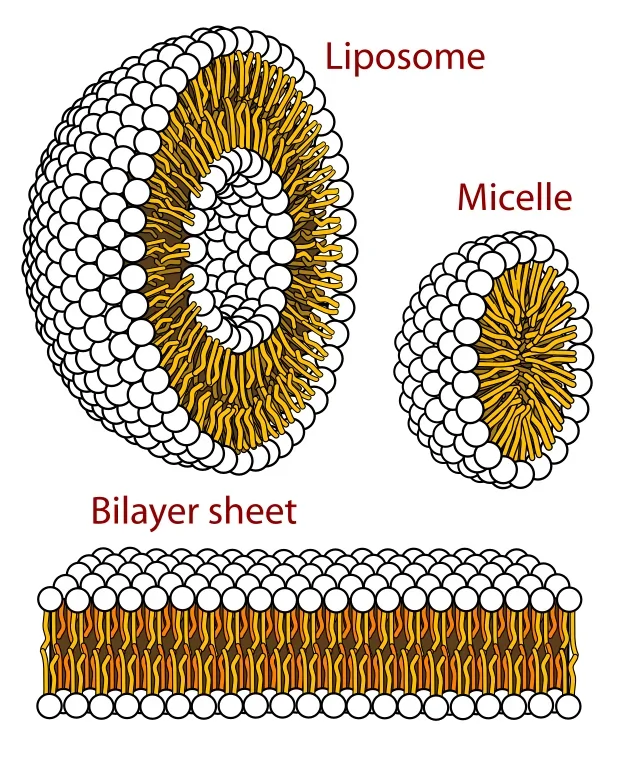 Structures formed by phospholipids in aqueous solution.
(Image: LadyofHats, Matt; via Wikimedia Commons; public domain)
Structures formed by phospholipids in aqueous solution.
(Image: LadyofHats, Matt; via Wikimedia Commons; public domain)
The first microbial life on Earth arose relatively early, in a period of Earth history we now call the Hadean (4000-4600 million years ago). The earliest estimates suggest that life arose as early as 300 million years after the formation of the Earth's solid crust. This is not certain, but it seems that the simplest life emerged on Earth as soon as conditions were suitable.
Stromatolites belong to the oldest surely proven forms of life. These are limestone formations formed by microorganisms, whose oldest fossil finds are currently dated to an age of 3770 million years.
Prerequisites of life
Prerequisites for the emergence of life were the presence of a first solid earth crust, of liquid water, as well as a first atmosphere.
The Earliest Atmosphere
The early atmosphere was very different from the present one. It was formed by outgassing of rocks, was much denser, rich in carbon dioxide and water vapor, with small amounts of methane, hydrogen sulfide, ammonia and carbon monoxide. Atmospheric oxygen did not yet exist. Presumably, an extreme greenhouse climate initially prevailed, with surface temperatures exceeding 100 degrees Celsius. [5] The atmosphere was comparable with the Venus atmosphere of today and presumably the earth resembled also externally Venus with its dense clouds, which prevent any view of the surface.
At some point in time in the early history of Earth, there was a cooling of the atmosphere and it began to rain for a very long time. It might have rained for tens of thousands of years, maybe longer. In the end, most of the of the water vapor had disappeared from the atmosphere and a first primeval ocean had formed. Earth was ready for the emergence of life. Something began that we now call "chemical evolution." This is how we today call the synthesis of the organic building blocks of life.
Chemical evolution (abiogenesis)
Life on Earth consists of various basic chemical building blocks: nucleic acids, proteins and lipids. Before life can develop, these must exist. The process leading from chemical elements to first life is called abiogenesis or chemical evolution.
Nucleic acids form the genetic material, the blueprint of life. The first nucleic acids may have formed on Earth shortly after its formation from organic molecules contained in meteorites. Researchers believe that shallow, warm ponds with pronounced wet-dry cycles on the primordial Earth are a possible place of origin. Under the conditions prevailing there, nucleotides, the basic chemical building blocks of nucleic acid, could have polymerized to form it. [6]
The second basic building block of life are proteins, molecular tools that perform a variety of tasks in all living organisms. Depending on their structure, they enable cell movements, catalyze chemical reactions, recognize signal substances or copy DNA.
The third basic building block are membrane-forming lipids. They are able to form cell walls as a result of their special chemical structure. They consist of a water-repellent and a water-attracting part and therefore tend to combine with other lipids to create planar and spherical structures. They may have been the most important ingredient on the way to the origin of life, as they are able to form enclosed spaces in which the other basic chemical building blocks of life can interact, combine and react undisturbed.
It is now believed that at some point various complex chemical molecules surrounded by a membrane of lipids combined to form a "biological machine" that could reproduce itself. This first more or less random reproduction was probably not very effective but it must have been good enough that its copies could also reproduce. No fossils exist from this time and this first simple precursor of life was too primitive and uncompetitive compared to what followed later. It was therefore completely superseded by its successors with no remaining trace.
The creation of a self-replicating biomachine from molecules is not as absurd as it may sound. The mathematician John Horton Conway has shown that with only 4 simple rules one can construct a virtual "machine" which is able to generate self-reproducing structures. He consequently called his discovery "The Game of Life".
Prokaryotes - Life begins
The first life forms were prokaryotes. These are simple, single-celled living organisms without a real cell nucleus. They were the only inhabitants of the planet for almost 2 billion years, and prokaryotes are still found on Earth today in the form of bacteria and archaea. The latter are characterized by high survivability even under adverse conditions. Some strains are adapted to extreme environmental conditions and can survive water temperatures above 80° C, very low or very high pH values, salinity or even pressures. [3]
 The Hadean is the oldest period of the earth's history. It covers the time from the
formation of the earth until about 4 billion years ago.
The Hadean is the oldest period of the earth's history. It covers the time from the
formation of the earth until about 4 billion years ago.
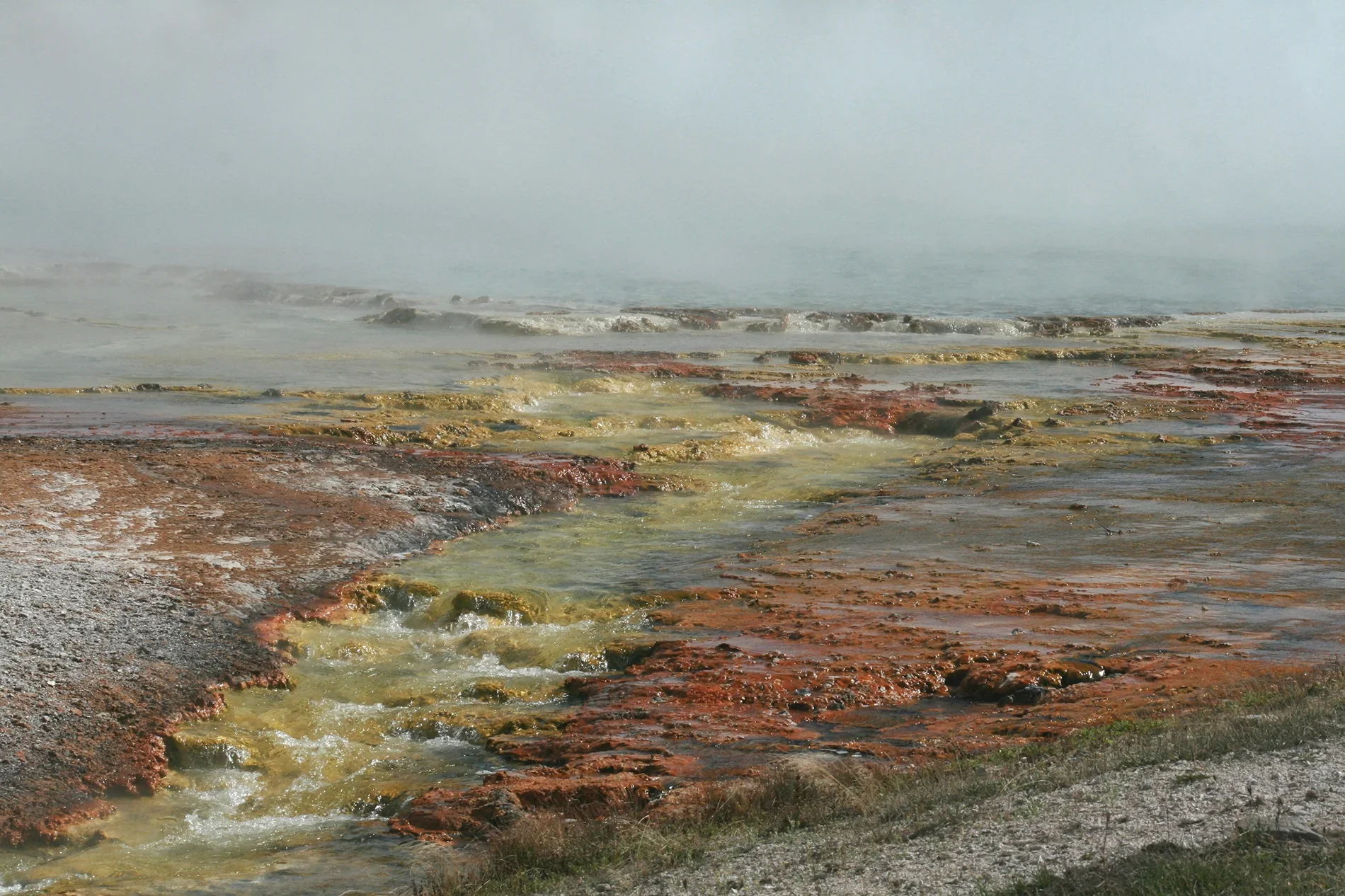 Microbial mat formed by extremophilic archebacteria. Crusts of iron and silica can protect
the microbes against UV radiation from the sun.
(Image: Randolph Femmer (USGS); Originalbild; Gemeinfrei)
Microbial mat formed by extremophilic archebacteria. Crusts of iron and silica can protect
the microbes against UV radiation from the sun.
(Image: Randolph Femmer (USGS); Originalbild; Gemeinfrei)
In the Hadean and Archean, the little land that already existed was largely sterile on the surface, because there was no ozone layer of molecular oxygen (O3) in the atmosphere to protect it from the sun's UV radiation. However, there is evidence that life in the form of bacteria and archaea was able to develop early on land in hot springs and geysers [7]. The biofilm-forming organisms living there are often surrounded by crusts of iron and silica, which can protect them from the UV radiation of the sun [11].
Life would remain unicellular for a very long time. It is possible that persistent or recurrent bombardment with meteorites and asteroids repeatedly prevented or destroyed developmental advances in the early history of the Earth. One such developmental advance is, for example, the ability to photosynthesize.
Photosynthesis
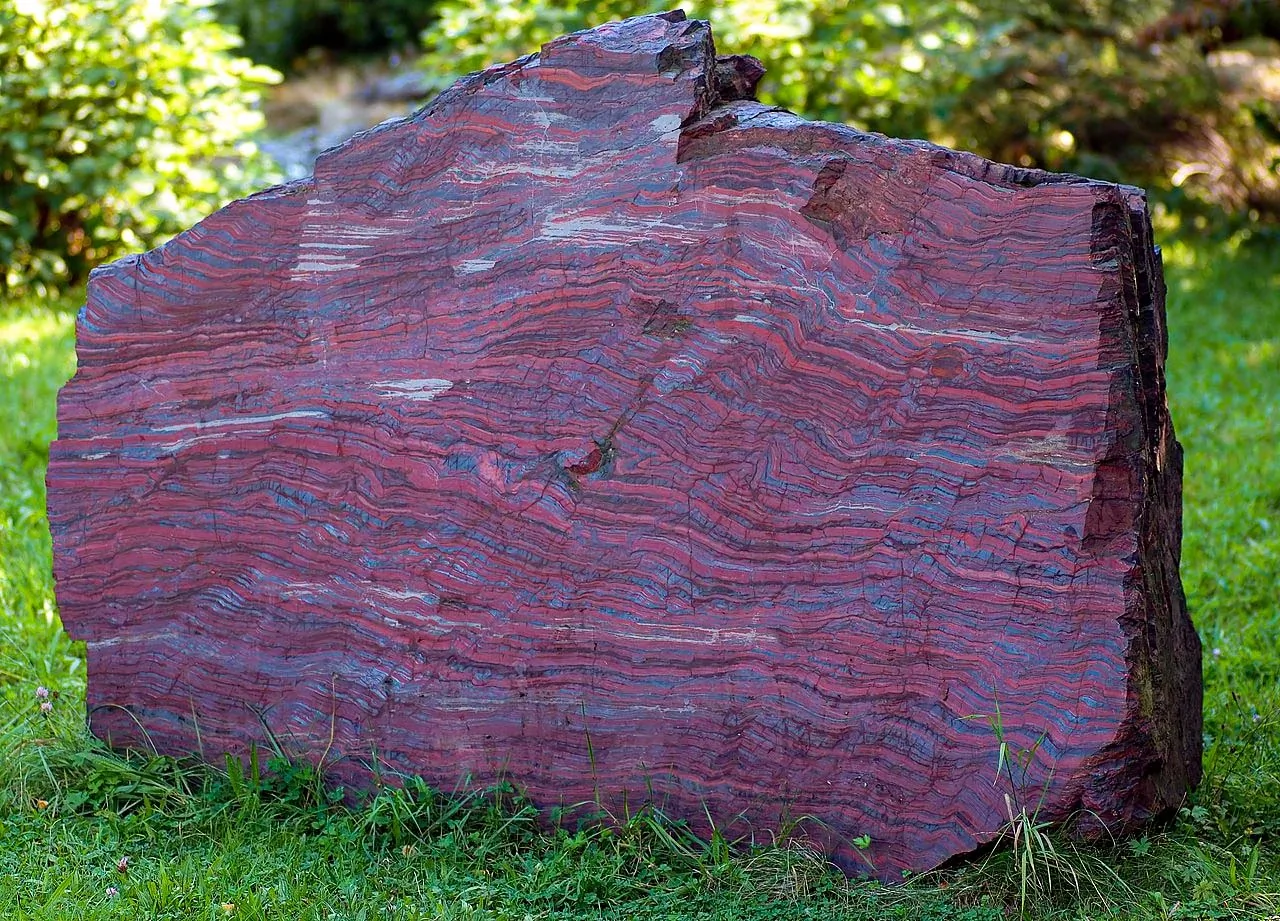 Banded iron formations are iron-rich sedimentary rocks and indirect evidence of early photosynthesis.
The oxygen released in the sea by cyanobacteria oxidized the divalent iron ions present in
the water to trivalent iron, which was deposited in sedimentary layers.
(Foto: André Karwath; via Wikimedia Commons; CC BY-SA 2.5)
Banded iron formations are iron-rich sedimentary rocks and indirect evidence of early photosynthesis.
The oxygen released in the sea by cyanobacteria oxidized the divalent iron ions present in
the water to trivalent iron, which was deposited in sedimentary layers.
(Foto: André Karwath; via Wikimedia Commons; CC BY-SA 2.5)
The universe is dominated by the elements hydrogen and helium, but on Earth oxygen is the most abundant element. 20% of the atmosphere consists of oxygen and today, in the form of oxides, it makes up almost half of the mass of the earth's crust. But in its free, molecular, form, the reactive oxygen was practically non-existent in the first 2 billion years of Earth's history. It was bound in the carbon dioxide of the atmosphere, in seawater and in rocks. A process that could release oxygen did not exist for a long time. Where would the necessary energy come from?
About 3,500 million years ago, in the Archean, the first microorganisms developed the ability to photosynthesize. This enabled them for the first time to use light to produce energy-rich biomolecules from the lower-energy inorganic substances carbon dioxide and water. The waste product would be molecular oxygen. Life had tapped into a new source of energy: The sun.
The ability to photosynthesize would slowly but surely change the earth completely and ultimately open the way for life to reach the mainland. But for the next 1000 million years, no oxygen entered the atmosphere. It was bound during the oxidation of mineral components of sea water which were released into the oceans by submarine volcanism. Even today, iron-rich banded iron ore deposits bear witness to the recurring oxidation phases during this period, which often lasted millions of years.
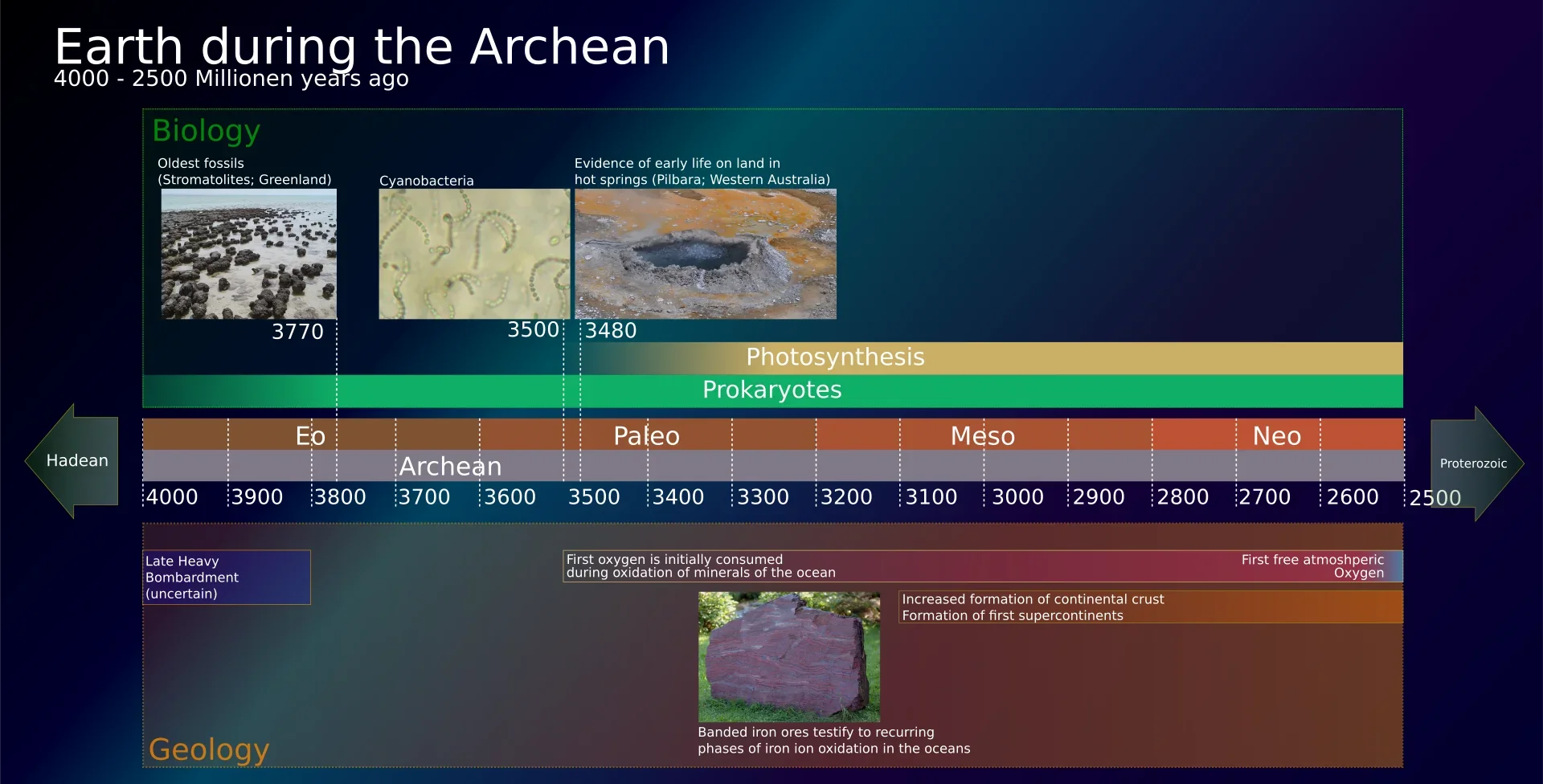 The Archean was a 1500 million year long age of the earth. The first prokaryotes began with
photosynthesis. At first, the released oxygen only oxidized the minerals dissolved in the
oceans and did not reach the atmosphere. After frequent meteorite impacts, the Earth's surface
slowly began to consolidate. In the second half of the Archean the first primeval
continents began to form.
The Archean was a 1500 million year long age of the earth. The first prokaryotes began with
photosynthesis. At first, the released oxygen only oxidized the minerals dissolved in the
oceans and did not reach the atmosphere. After frequent meteorite impacts, the Earth's surface
slowly began to consolidate. In the second half of the Archean the first primeval
continents began to form.
The Great Oxidation Event
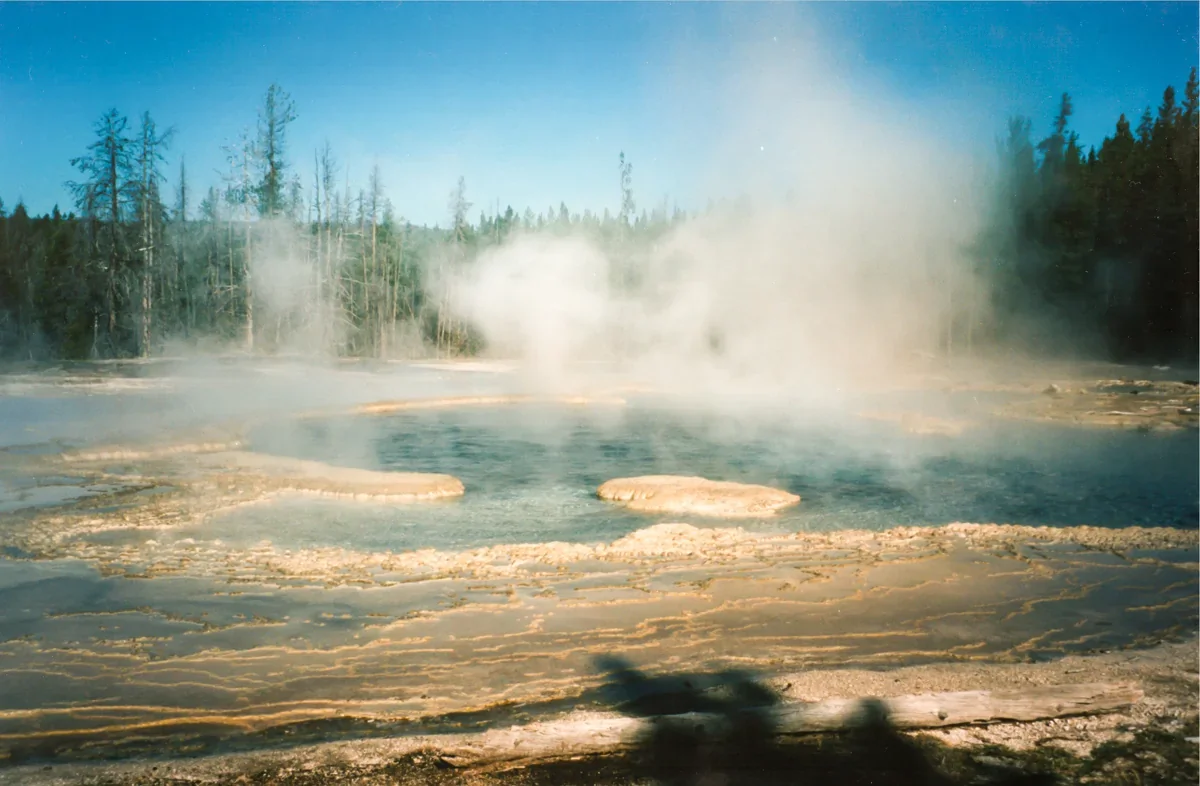 Archaebacteria once populated the entire planet. Today, they are mainly found in extreme
habitats such as hot springs in an environment rich in hydrogen sulfide. For such life
forms, an oxygen-rich atmosphere is an extreme habitat. (Photo: Ingo Berg)
Archaebacteria once populated the entire planet. Today, they are mainly found in extreme
habitats such as hot springs in an environment rich in hydrogen sulfide. For such life
forms, an oxygen-rich atmosphere is an extreme habitat. (Photo: Ingo Berg)
At a certain point in time, the minerals dissolved in the sea were largely oxidized and the supply through volcanism and plate tectonics was too low to continue to bind all the oxygen produced by photosynthesis. For life, photosynthesis was a success model, it would not stop but now there was nothing left to bind the oxygen and so the oxygen levels slowly began to rise. First in the seawater and then in the atmosphere. At first only a little, but that was enough to steer the development of life on earth in a completely different direction.
With this, now unhindered, oxygen enrichment in the habitats of the earth, a first mass extinction event began, because oxygen was toxic for many of the prokaryotic life forms of this epoch. The conversion of an entire biosystem from anaerobic to aerobic metabolism had begun. Anaerobic metabolism is found today mainly in archaebacteria. These are the only known survivors of the great oxygen catastrophe. They colonize oxygen-poor, extreme habitats such as hot volcanic springs or "black smokers". There are also some known eukaryotes with anaerobic metabolism today, but these usually started their evolution as aerobic life forms, which developed anaerobic metabolism only later as an adaptation to an extreme habitat.
The Eukaryotes
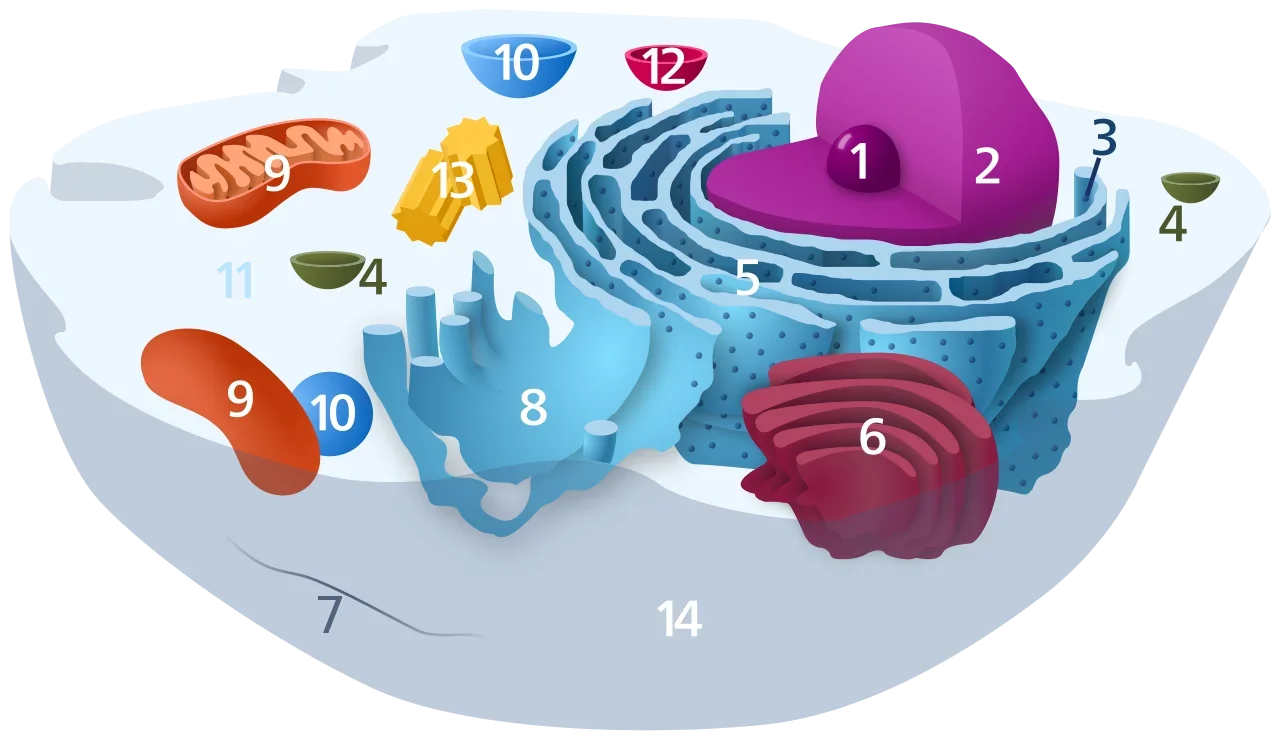 Diagram of a typical animal cell:
1. Nucleolus 2. Nucleus 3. Ribosomes (dots on rough reticulum walls)
4. Vesicle 5. Rough endoplasmic reticulum 6. Golgi apparatus (or "Golgi body")
7. Cytoskeleton 8. Smooth endoplasmic reticulum 9. Mitochondrion
10. Vacuole 11. Cytosol 12. Lysosome 13. Centriole 14. Cell membrane
(Image: Kelvinsong; via Wikimedia Commons; CC0)
Diagram of a typical animal cell:
1. Nucleolus 2. Nucleus 3. Ribosomes (dots on rough reticulum walls)
4. Vesicle 5. Rough endoplasmic reticulum 6. Golgi apparatus (or "Golgi body")
7. Cytoskeleton 8. Smooth endoplasmic reticulum 9. Mitochondrion
10. Vacuole 11. Cytosol 12. Lysosome 13. Centriole 14. Cell membrane
(Image: Kelvinsong; via Wikimedia Commons; CC0)
Prokaryotes now existed for 2 billion years and colonized a wide variety of habitats over time. But their complexity, size and ultimately their evolutionary potential remained limited. It was the ability to generate oxygen through photosynthesis that created the conditions for the emergence of a new domain of life: the eukaryotes. This domain today contains all the fungi, plants and animals on Earth, almost the entirety of multicellular life. It was a crucial step for the evolution of higher life forms and perhaps an extremely improbable one.
Eukaryotic cells are on average 10 to 15 thousand times larger than prokaryotic cells. They have a cell nucleus in which the genetic material is packed into chromosomes. Their cells consist of various cell organelles, which perform different tasks like the organs of a body. Among them are the mitochondria, the power plants of the cells. They have their own genetic material and use the respiratory chain to produce adenosine triphosphate (ATP), an energy-rich molecule that serves as the cells' fuel. Eukaryotes require oxygen for their metabolism to survive. (There is only one known species today that has lost the ability to breathe oxygen: Henneguya zschokkei, a multicellular salmon parasite).
Exactly how prokaryotes evolved into eukaryotes is not clear. There are no known intermediate stages. According to the endosymbiont theory, mitochondria may once have been independent oxygen-using bacteria that gave up their excess energy to neighboring prokaryotes in exchange for other substances. Over time, this symbiosis became closer and one cell was absorbed into the other. The new cell now had much more energy than before and was thus able to grow larger. [8]
 The first eukaryotes appeared about 2000 million years ago, at the end of the
great oxydation event. For the first time in the history of the earth, there was
free atmospheric oxygen, albeit still in small quantities. In the period between
1800 and 800 million years ago, development stagnated. The oxygen content
in the atmosphere was low and did not increase further. The oceans were predominantly
colonized by anerobic cyanobacteria, which use hydrogen sulfide for photosynthesis
instead of water and release sulfur instead of oxygen.
The first eukaryotes appeared about 2000 million years ago, at the end of the
great oxydation event. For the first time in the history of the earth, there was
free atmospheric oxygen, albeit still in small quantities. In the period between
1800 and 800 million years ago, development stagnated. The oxygen content
in the atmosphere was low and did not increase further. The oceans were predominantly
colonized by anerobic cyanobacteria, which use hydrogen sulfide for photosynthesis
instead of water and release sulfur instead of oxygen.
The Boring Billion and Multicellular Life
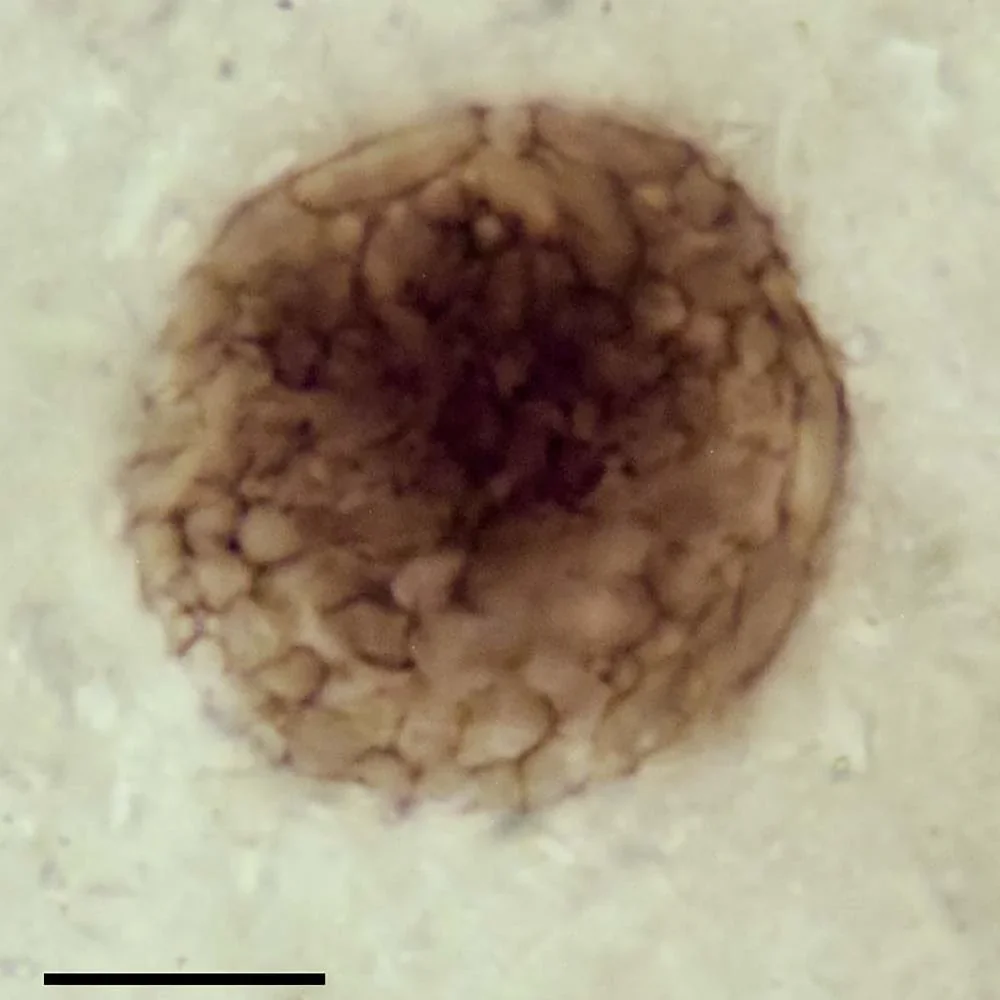 A fossil of the species Bicellum brasieri. This species, discovered in 2021
represents the oldest known fossils of multicellular organisms with an age
of 1 billion years. (Image: Paul K. Strother, Martin D. Brasier, David Wacey, Leslie Timpe, Martin Saunders, Charles H. Wellman; aus [9]; via Wikipedia.org; CC BY 4.0)
A fossil of the species Bicellum brasieri. This species, discovered in 2021
represents the oldest known fossils of multicellular organisms with an age
of 1 billion years. (Image: Paul K. Strother, Martin D. Brasier, David Wacey, Leslie Timpe, Martin Saunders, Charles H. Wellman; aus [9]; via Wikipedia.org; CC BY 4.0)
After the development of the first eukaryotes, there is initially a period of calm. This period is called "The Boring Billion". It was a time of tectonic and climatic stability in which evolution seemed to stagnate. The oxygen content of the Earth's atmosphere decreased. In the nutrient-poor oceans of this time, anerobic cyanobacteria may have carried out photosynthesis based on hydrogen sulfide instead of water. [10]
Despite the supposed uneventfulness of this epoch, the eukaryotes achieved some decisive developmental steps. Such as the emergence of new cell organelles, the formation of sexual reproduction, the first multicellular life and the diversification of eukaryotes into fungi, animals and plants fall into this period. Cyanobacteria still dominated, but first eukaryotic precursors of lichens began to colonize the continents. [10]
In total, life on Earth took about 3.5 billion years from its emergence to multicellularity. After this period of time, the most highly evolved living being on the planet looked like the one shown in the picture on the right. It shows the multicellular organism Bicellum brasieri, a microscopic spherical organism. It was found in the fossilized sediments of a prehistoric lake in what is now Scotland. (Diabaig Formation).
The oldest known multicellular organisms may also be the so-called Gabon macrofossils. These finds, also known as Gabonionta, were first described in 2010. With an age of 2.1 billion years they would be significantly older than Bicellum brasieri. If they have a biological origin, they would significantly advance the dating of the first multicellular organisms [12]. At present, however, their classification is still controversial.
The End of the Beginning
 Snowball Earth. Artistic representation of a completely frozen earth as it may
have looked like during the Cryogenian period. (Image: Oleg Kuznetsov / 3depix; CC BY-SA 4.0)
Snowball Earth. Artistic representation of a completely frozen earth as it may
have looked like during the Cryogenian period. (Image: Oleg Kuznetsov / 3depix; CC BY-SA 4.0)
The time of stability on Earth would come to an end. What followed, were several, million year long ice ages in which the planet completely froze. Periods that we today call "Snowball Earth". Once a planet is frozen, the bright snow reflects most of the Sun's radiation directly back into space. A less geologically active planet might have remained in an ice age lasting for billions of years. But Earth managed to free itself from the ice time and time again through volcanism.
The planetary glaciations were extreme events and probably an existential challenge for the multicellular life that had just emerged. It had to adapt or it would die out and leave the field again to the simpler prokaryotes. There would still be enough "dark smokers" in the eternal darkness under the ice where these more primitive species felt at home. But the eukaryotes did not die out. On the contrary, in the Neoproterozoic, they had acquired all the basic characteristics that would later enable them to first conqer the oceans and then the continents at a speed that was unique in the history of Earth.
The Ozone Layer - A Global Shield for Life
Until now, the available habitat was still mainly limited to the water. Only there it was possible to avoid the UV radiation emitted by the Sun. This began to change slowly, because the oxygen released by photosynthesis, accumulated in the atmosphere. 600 million years ago it began to form an UV radiation blocking ozone layer.
At first glance, Earth would still be an apparently lifeless, volcanically active rocky planet with oceans, imposing polar caps, and an atmosphere that began to shimmer blue. The only life that could have been found on land in the Neoproterozoic were microbial mats near hot springs. But when the Proterozoic ended, life had created itself an atmospheric shield from the Sun's deadly UV radiation. What was about to happen now was to be the most spectacular time in the evolutionary history of the Planet. Today we call this time the "Cambrian explosion".
 This is what the Earth might have looked like in the Neoproterozoic during the Gaskiers Ice Age.
It still showed no obvious traces of terrestrial life. There was only microbial life in the
form of archaea and cyanobacteria. But in the oceans big changes were about to happen.
(Image: Own work; AI-generated)
This is what the Earth might have looked like in the Neoproterozoic during the Gaskiers Ice Age.
It still showed no obvious traces of terrestrial life. There was only microbial life in the
form of archaea and cyanobacteria. But in the oceans big changes were about to happen.
(Image: Own work; AI-generated)
References
- Jan de Vries, Bruce A. Curtis, Sven B. Gould und John M. Archibald: "Embryophyte stress signaling evolved in the algal progenitors of land plants" PNAS 115 (15); E3471-E3480; Erstveröffentlichung 2018-03-26
- Adam Mann: "Bashing holes in the tale of Earth’s troubled youth." Nature 553; 2018
- Wikipedia: "Archaeen - Wikipedia, die freie Enzyklopädie" Online; Stand 2. Januar 2022
- Pfizer.com: "How Genetically Related Are We to Bananas?" Online; Stand 6. Januar 2022
- bildungsserver.de: "Geschichte der Erdatmosphäre" Online; Stand 9. Januar 2022
- Ben K. D. Pearce, Ralph E. Pudritz, Dmitry A. Semenov, and Thomas K. Henning: "Origin of the RNA world: The fate of nucleobases in warm little ponds" PNAS 114 (43); 11327-11332; Erstveröffentlichung 2017-10-03
- University of New South Wales: "Oldest evidence of life on land found in 3.48-billion-year-old Australian rocks" online; via phys.org; abgerufen am 09.01.2022
- Jürgen Paeger: "Die Entfaltung des Lebens auf der Erde – 2; Der Weg zum vielzelligen Organismus" Online; abgerufen am 2021-01-10
- Paul K. Strother, Martin D. Brasier, David Wacey, Leslie Timpe, Martin Saunders, Charles H. Wellman: "A possible billion-year-old holozoan with differentiated multicellularity" Current Biology; Volume 31; Issue 12; p2495-2736, R763-R820; Online; Veröffentlicht 2021-04-13
- Wikipedia: "The Boring Billion" Wikipedia, The Free Encyclopedia.; Online; abgerufen am 2022-01-25
- Aleksandra M. Mloszewska, Devon B. Cole, Noah J. Planavsky, Andreas Kappler, Denise S. Whitford, George W. Owttrim, and Kurt. O Konhauser: "UV radiation limited the expansion of cyanobacteria in early marine photic environments" Nature Communications; DOI 10.1038/s41467-018-05520-x
- El Albani et al. "Large colonial organisms with coordinated growth in oxygenated environments 2.1 Gyr ago" Nature, 466, 100-104, doi:10.1038/nature09166

